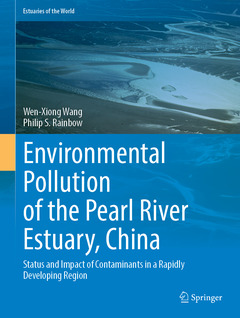Prof. Wen-Xiong Wang is a Chair Professor at the School of Energy and Environment, City University of Hong Kong, and was formerly affiliated with the Hong Kong University of Science and Technology. Prof. Wang is an ecotoxicologist by training and has been working on metal ecotoxicology for over 30 years. His major research goal is to understand the biogeochemistry, bioavailability and toxicity of metals to aquatic organisms, so as to better manage metals in the environment. Prof. Wang has authored over 460 peer-reviewed publications on subjects related to metal ecotoxicology, biogeochemistry, and more recently nanotoxicology. He is the corresponding or first author for the majority of his publications. He is the Editor of Environmental Toxicology and Chemistry, an Associate Editor of Environmental Pollution, and serves on the Editorial Boards of many other international journals on the environmental sciences. He received the prestigious Overseas Distinguished Young Scientist Award from the Chinese National Science Foundation in 2002, the Biwako Prize for Ecology in Japan for his work on metals in aquatic systems, the Changjiang Chair Professorship from the Ministry of Education in 2006, and the first Prize in Natural Science (as a sole PI) from the Ministry of Education for his work on the trophic transfer of metals. He is an elected fellow of SETAC and the Institute of Marine Engineering, Science and Technology.
Prof. Philip Rainbow has nearly 50 years of experience researching the biology of trace metals. As lecturer, reader, professor and Head of Department at the School of Biological Sciences, Queen Mary University of London, he has taught students at the undergraduate, masters and PhD levels, and often conducted courses overseas. From 1997 to 2013, he was Keeper of Zoology and subsequently Head of the Department of Life Sciences at the Natural History Museum in London. He has published more than 250 refereed scientif




